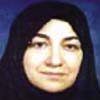Towards a Geocritical Approach: Representation of Space and Urban Identity in Mohammad Ali Sepanlou's Poetry
In his book, pour une géographie littéraire, after presenting a general overview of the current trends in the field of literary geography, Michel Collot examines the works of some writers and poets of the 19th and 20th centuries. In all countries and at all times, faced with the diversity and complexity of questions that the literary text raises, the contributions provided by Geocriticism benefit from being confronted with other reflections. In the context of Farsi poetry, Mohammad Ali Sepanlou is among the few poets who have considered the theme of space and city as an important element in poetic imagery and has places his hometown, Tehran, as the main theme of his works. Sepanlou is a poet of Tehran. He has written some poems about Tehran and in his other works, he mentioned his hometown with great poetic affection. In this paper, based on the ideas of Michel Collot about literary geography and trying to apply them to certain poems of Sepanlou, we are going to study the presence of Tehran in the work of Sepanlou and the way he approaches this city.
-
La poétique de l'espace dans l'usage du monde de Nicolas Bouvier
Jaleh Kahnamouipour *, Katayoun Shahpar-Rad, Azine Hossein-Zadeh
Plume, Autumn-Winter 2024 -
Dialogism in Two Contemporary Iranian and French Novels: Autumn Is the Last Season of the Year by Nasim Marashi and Three Strong Women by Marie Ndiaye
Jaleh Kahnamaipour, Akbar Abdollahi *
Research in Contemporary World Literature,


